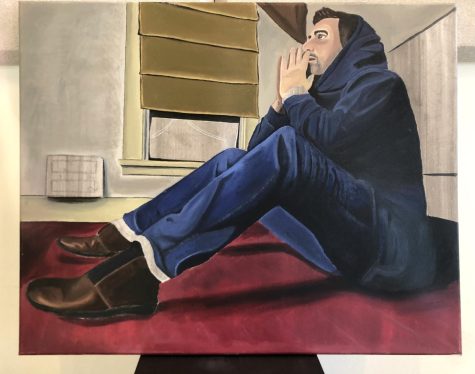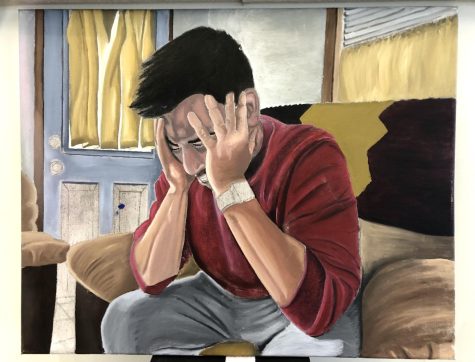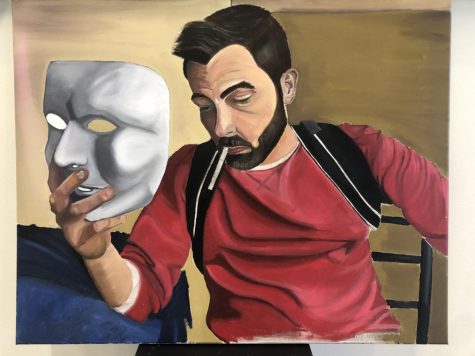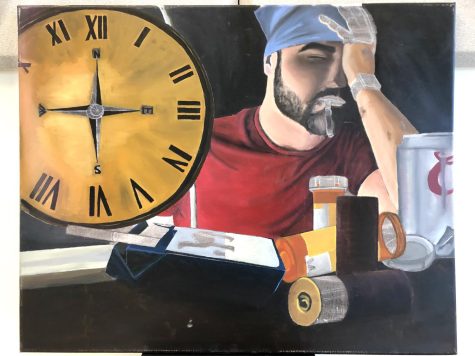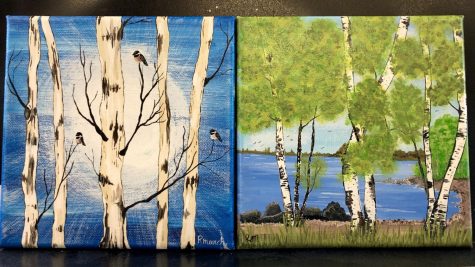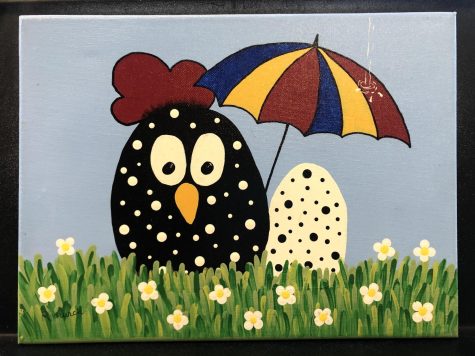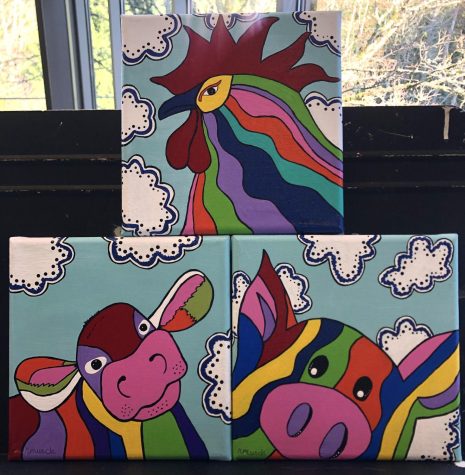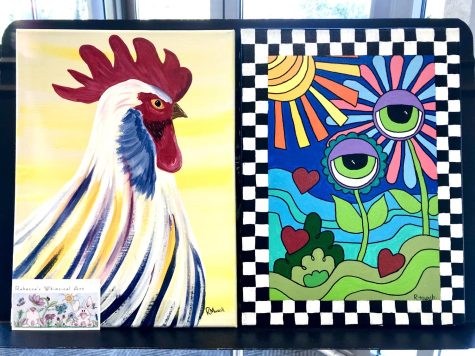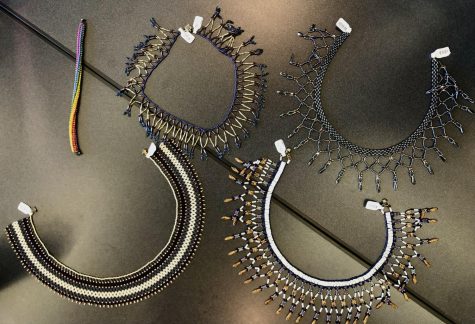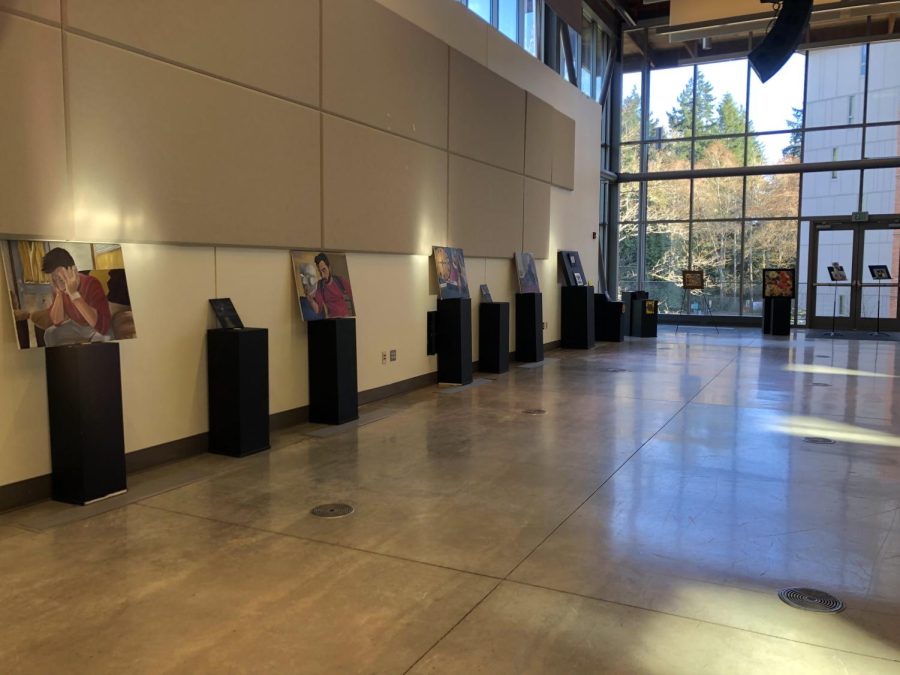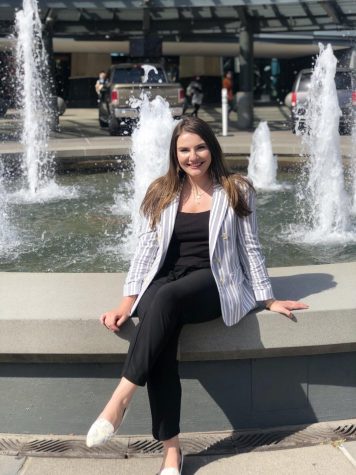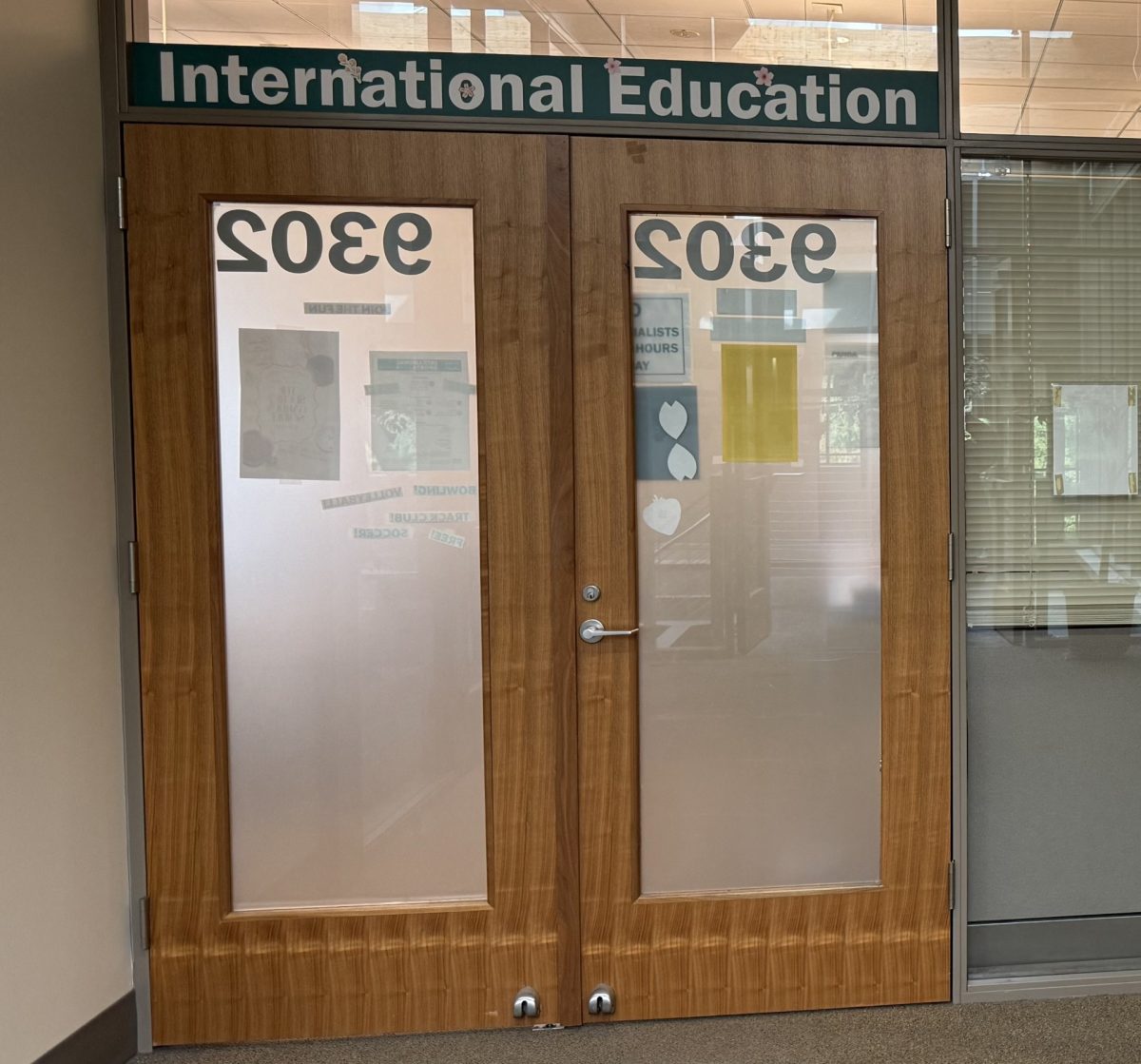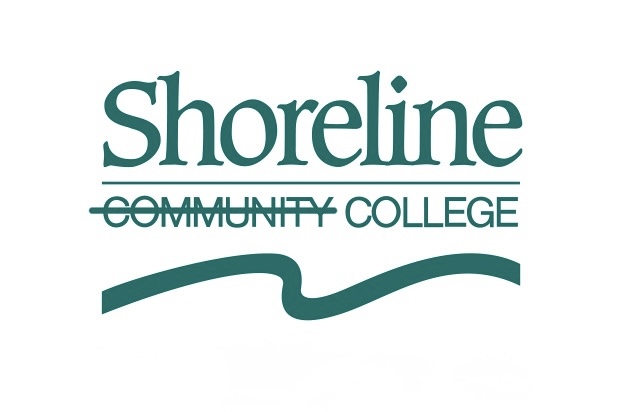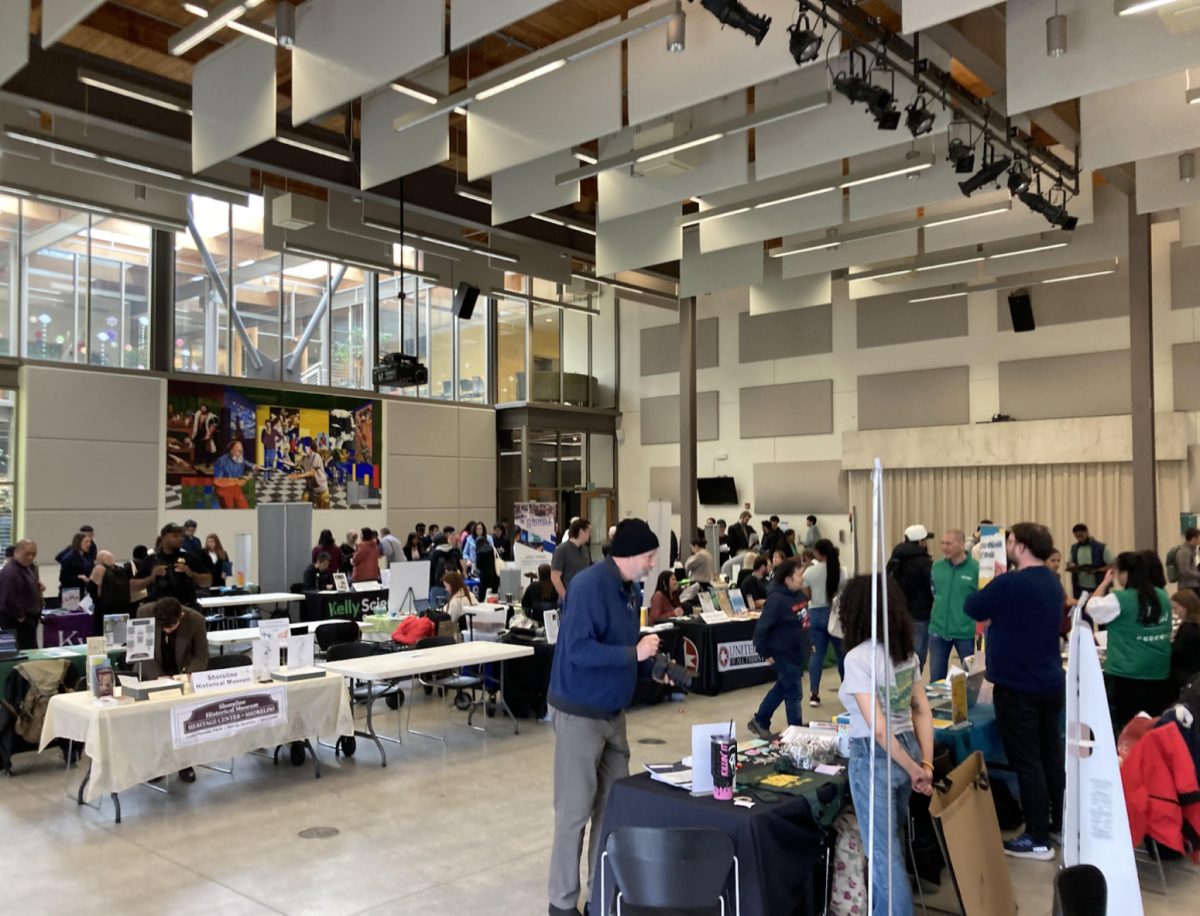Painting Away The Trauma: An Inside Look At SCC’s Veteran Art Exhibition
Moving display demonstrates the mental and emotional healing power of art therapy
March 25, 2022
On Wednesday, March 16, SCC hosted “Painting Away the Trauma.” Held in the PUB in collaboration with WA AmeriCorps Vet Corps, the art exhibition featured a diverse display of work submitted by Puget Sound-area veterans managing varying degrees of physical and mental conditions.
“Painting Away the Trauma” delved firsthand into the impacts military service can have on everyday lives, and how veterans can use creativity to express their experiences and emotional battles while on-duty and after returning home.
Showcased art included photographs, beadwork and paintings created by both former and active-duty personnel serving around the world. Attendees had the opportunity to speak to veterans about their pieces, as well as their relationship with art therapy and its benefits for those with post-traumatic conditions.
Among those presenting artwork was SCC alumnus and combat veteran Jake Powell, who served as a Marine for 10 years and through three tours in Afghanistan. Powell spoke with The Ebbtide on how a college art class introduced him to using visual artistry as a therapeutic outlet and the role it played in managing emotions and bringing clarity.
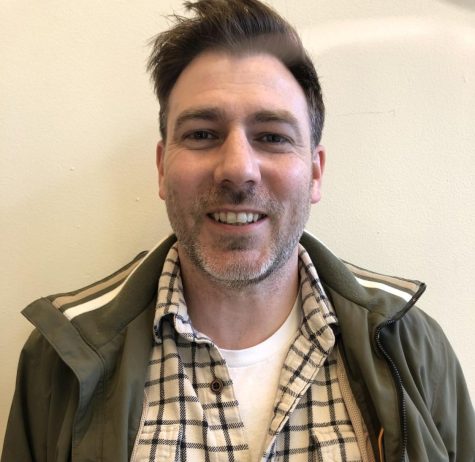
Can you describe your relationship with art therapy and how it has helped you with managing everyday life as a veteran?
Powell: I sort of stumbled on the whole therapy aspect of art when I started painting here at Shoreline. I’ve drawn my whole life, I had sketchbooks, used graphite, charcoal — all of that. I had never picked up paint that much. As soon as I was on a Fine Arts track here at Shoreline, I was required to paint. I started painting and drawing, and after an extended amount of time I’d think, “Oh wait, I kind of feel a little better.” I suppose that mentally it helped. I had a little more clarity.
As I continued to draw and paint, I realized I was paying attention to my emotions: my manner, my temper. They were being channeled into something positive. Once I grasped it and pursued it, I realized I needed this outlet from being a combat vet.
I use art a lot, not every single day but probably three times a week. It’s a hobby that has a therapeutic aspect to it and it helps me focus, I suppose. I think of my mind as a web browser that has 20 tabs open; 10 of them are loading and there’s maybe one or two that are working fully. So sometimes when I paint or am done painting, I can think a little bit more clearly about other tasks.
How are your experiences serving or returning home expressed in your paintings?
As far as coming home, all of these paintings are about transitioning from active-duty or combat to coming back to civilian life. And while doing that, I wanted to express some of the things that *I* go through, in hopes of meeting people who have experienced something similar. There’s a lot of emotion that was put into these paintings and there’s a lot of emotion that comes out. I think that’s the biggest thing: trying to express the emotions. With vets, even getting them to *talk* is tough, so getting veterans to express themselves helps so much.
View Powell’s paintings and other featured veteran artworks below:””
